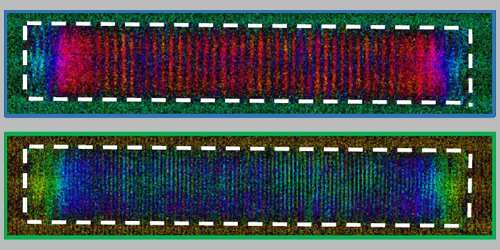Credit: Physical Review Letters (2021). DOI: 10.1103/PhysRevLett.126.057201
A team of researchers affiliated with several institutions in Germany and Poland has demonstrated driven space-time crystals at room temperature. In their paper published in the journal Physical Review Letters, the group describes applying theories surrounding space-time crystals to magnons and how doing so allowed them to exploit electron spin in a way that could prove useful in information technology applications.
Crystals are defined by repeating pattern structures. Other research (by Frank Wilczek in 2012) has suggested that space-time crystals are defined in similar ways with structures that repeat in both time and space. More recent work has led to describing roadmaps for their creation in a lab setting. In this new effort, the researchers have used magnons (quasiparticles that are collective excitations of the spin structure of electrons in a crystal) to realize driven space-time crystals in a room temperature environment. The hope is that such structures, with their new state of matter, can be used to store information with far more energy efficiency than technologies in use now.
To create their space-time crystals, the researchers placed a length of nickel-iron alloy in a radio frequency field. Doing so resulted in the creation of excited magnons, which pushed them to assume a dynamic pattern—the researchers described them as similar to balls on a pool table, though in this case, all the balls returned to their initial positions after passing out of the radio frequency field.
The researchers made images of their crystals using X-ray microscopy and then used the images to drive other magnons toward the ones they had created. Doing so resulted in the newly introduced magnons scattering in patterns similar to those of regular crystals. It also resulted in the production of shorter magnons (as small as 100-nm wavelengths) with tunable wavelengths—tuning could be accomplished by changing characteristics of the radio frequency field. The researchers note that being able to reconfigure space-time crystals using their method in a room temperature environment could allow for the construction of new information technology devices that use far less energy.
More information: Nick Träger et al. Real-Space Observation of Magnon Interaction with Driven Space-Time Crystals, Physical Review Letters (2021). DOI: 10.1103/PhysRevLett.126.057201
Journal information: Physical Review Letters
© 2021 Science X Network
























